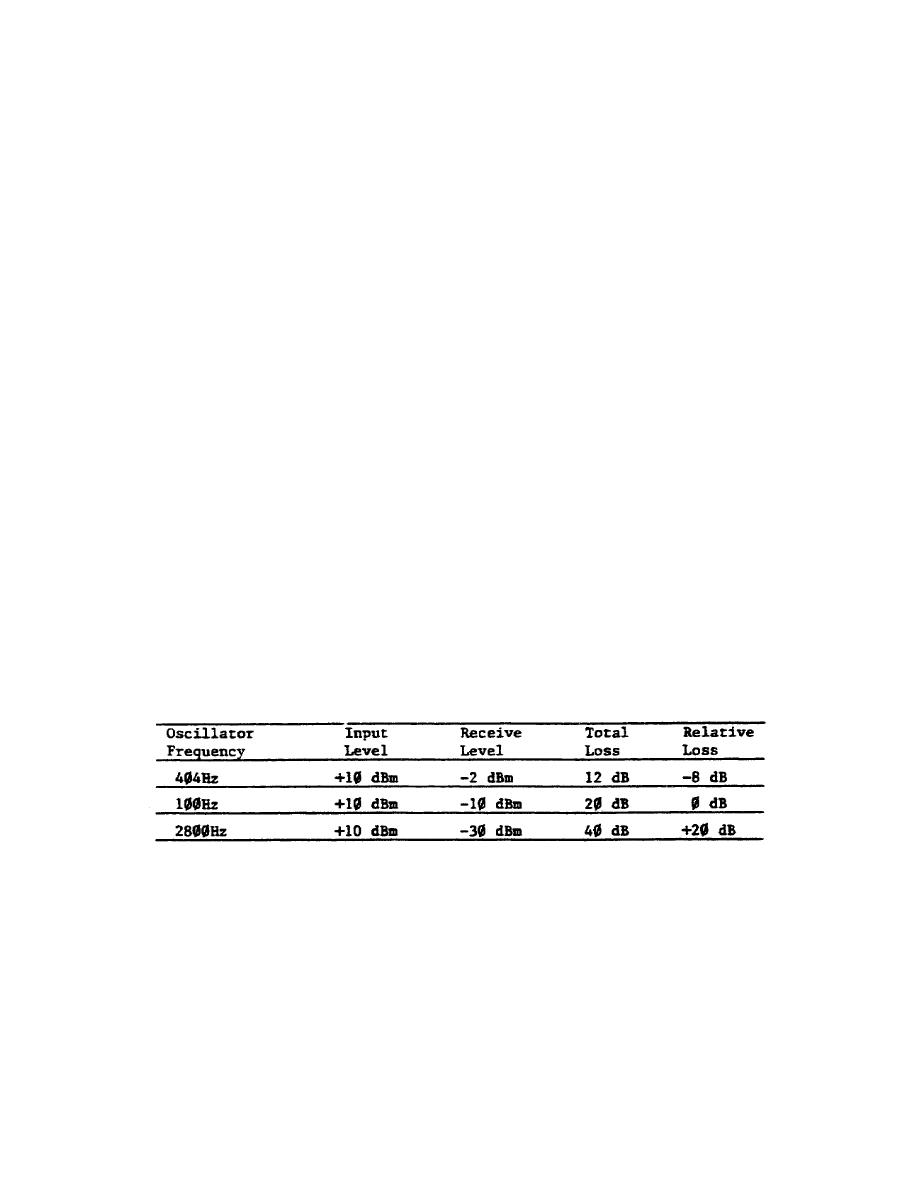
Lesson 2/Learning Event 5
quality and intelligibility in telephone service. The most serious effects
are encountered in digital service when distortion of the individual signal
elements (bits or pulses) cause errors in the receiving terminal equipment.
Frequency-versus-amplitude distortion is a significant source of errors in
digital service. The insertion loss measurement is important to ensure that
the frequency response characteristic of a channel is adequate for its
intended use and to permit operation of several channels in tandem without
unacceptable degradation.
Frequency-versus-amplitude distortion is not
specified or measured as such.
Instead, the frequency response
characteristic of channels are specified in terms of insertion loss.
(c) Since channels may be engineered to provide loss or gain,
insertion loss is a relative term which must be referred to the actual
level, 1004 Hz (standard test frequency) for voice frequency channels.
Insertion loss is not a measurable quality; it is calculated by finding the
difference between the reference frequency and the actual frequency measured
at the receive of a voice channel.
(d) Assume, for example, that an oscillator is used to send a test
signal through a telephone line that terminates in a level meter.
The
oscillator is adjusted to place a level of +10 dBm into the line at three
selected frequencies of 404 Hz, 1004 Hz and 2804 Hz.
The results of the
test are shown below. Total loss is the difference between the input level
and the receive level of any frequency.
Relative loss is the difference
between the total loss at 1004 Hz and the total loss at the other two
frequencies. To establish a reference, the loss at 1004 Hz is considered 0
dB; in this way, losses at the other frequencies can be quoted with respect
to the reference (0 dB). The relative loss at 404 Hz is 8 dB less than the
loss at 1004 Hz, so it carries the minus sign (-).
The relative loss at
2804 Hz is 20 dB more than the loss at 1004 Hz, so it carries the plus sign
(+).
38



 Previous Page
Previous Page
